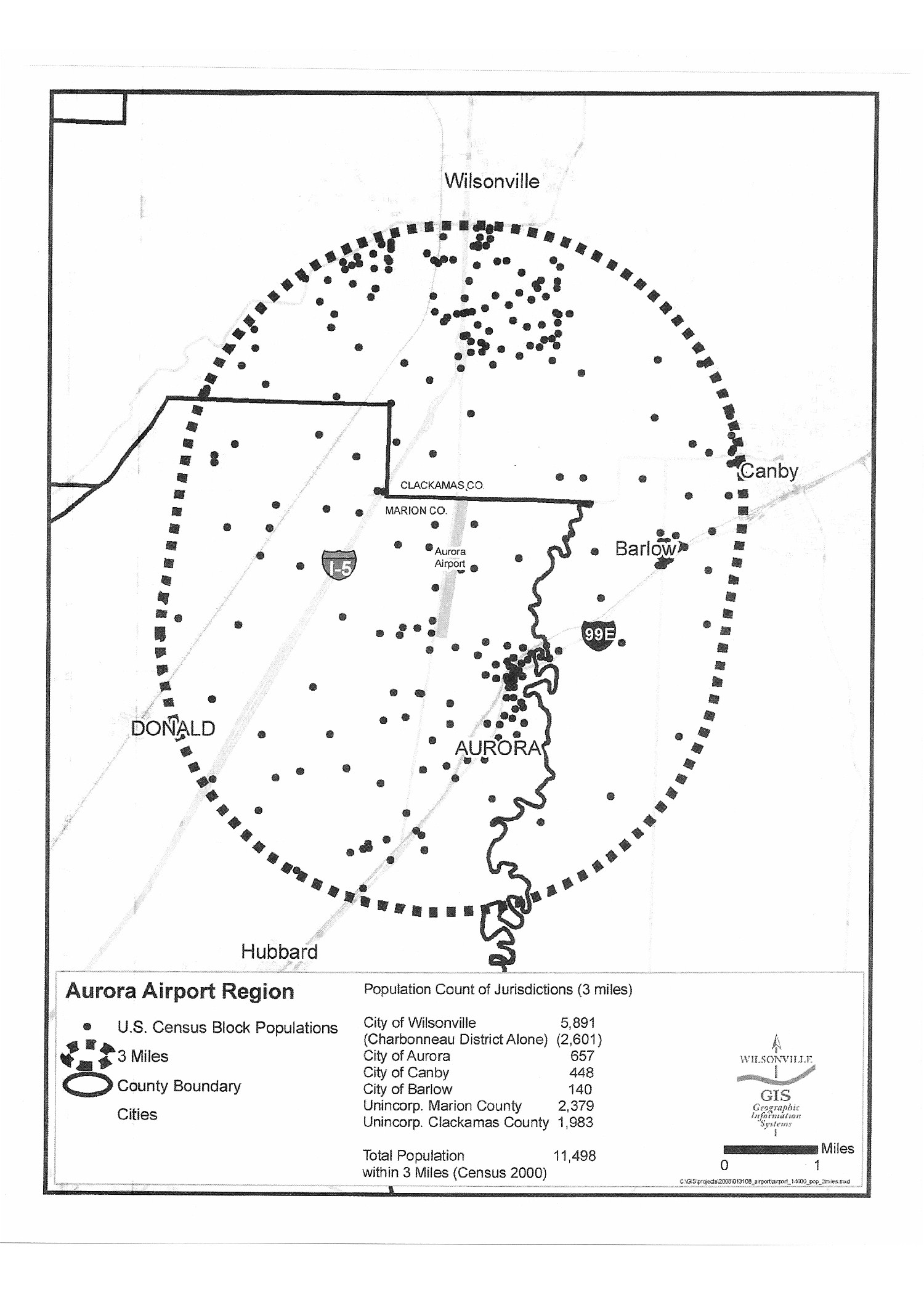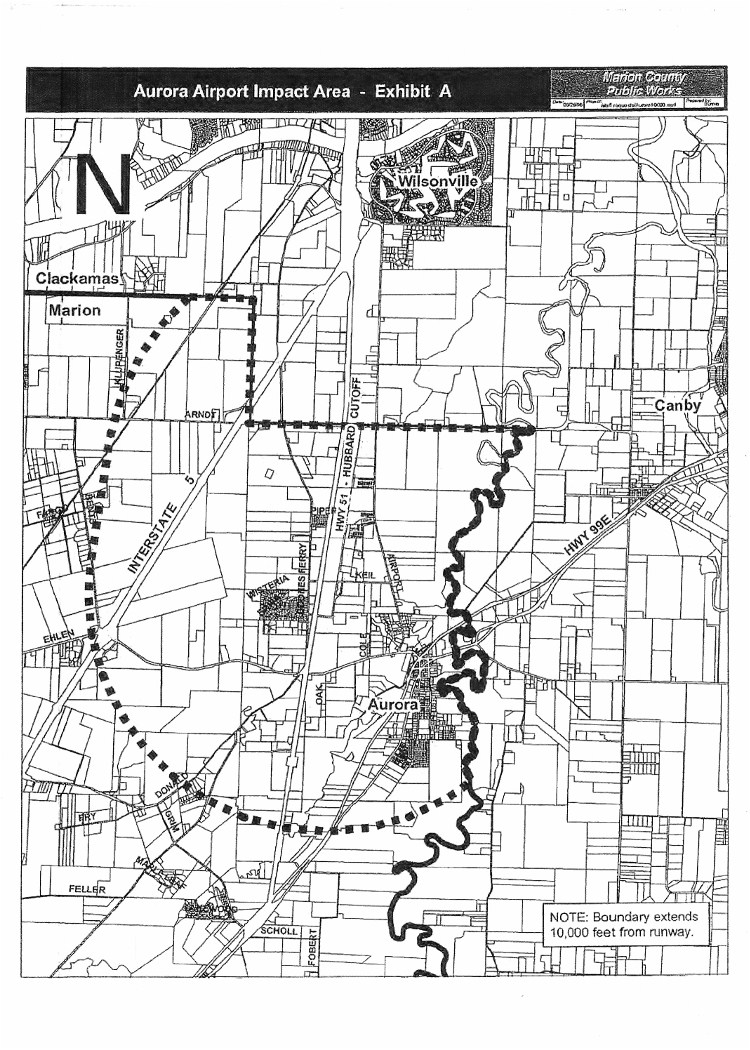Over the course of the past two years, a great deal of activity has been afoot behind the scenes concerning the Aurora Airport. Most focused on the prospect of a getting funding and approval for an air traffic control tower at the airport. On June 7, Commissioner Milne presented a proposed Intergovernmental Agreement (IGA) to the County Board of Commissioners for approval. This IGA was approved and fast-tracked so that it could be signed and delivered to the Oregon Dept. of Aviation (ODA) the next day. The tower project has been approved by the Federal Aviation Administration (FAA) and funding for it is pending the final decision of funds allocation from the ConnectOregon III program. The tower was reported by the Woodburn Independent to be number four on the project list (see article below) on June 17. These facts confirm that the application for funding the tower was submitted far in advance of updating the airport master plan.
The Costs and the Benefits
The obvious benefit of an air traffic control tower at the Aurora Airport is greatly improved safety for all aircraft operators. The airport is the second busiest in the state (after PDX) and has a mix of propeller and jet aircraft as well as helicopters. With its north-south runway axis a large percentage of flights approach or take off over Charbonneau and Wilsonville. An air traffic control tower would benefit aviation and improve safety by sequencing flights, and could mitigate noise impact by moving from visual approaches to more optimal flight paths. Cleary this is in the public interest.
The problem is that while improved safety is being touted as the reason for pursuing the tower, there are many other motivations—many very problematic—that have made the process conflicted and questionable. Citizens and communities have been excluded to the benefit of aviation interests. Land use planning laws have been ignored in favor of fast tracking the project. Funding applications are full of misrepresentation in order to put forward the appearance of unanimity. Important impacts like traffic mitigation have been deferred into the future in order to line up the approvals now. And at the end of it all, the outcome beyond safety is the potential for rampant development at the Aurora Airport.
Impacted Communities and Citizens
Wilsonville and Clackamas County have been trying to become a part of the airport master planning process for two years, as has Friends of French Prairie. The fact that the north end of the airport sits on the Marion-Clackamas County line, and that the north end of the runway is just south of the county line makes an indisputable case that much of the flight impact (noise, pollution, etc) will occur in Clackamas County, specifically in Charbonneau and Wilsonville. In the ten mile radius around the airport, the population concentration is in Wilsonville and Charbonneau, resulting in the following impact zone map prepared by the City of Wilsonville.
The process to approve and fund the air traffic control tower has essentially been reduced to a negotiation between Commissioner Milne representing Marion County, the ODA, the FAA and aviation interests at the airport—who stand to financially gain from a tower. Excluded have been public hearings to solicit citizen input, as well as the Cities of Wilsonville & Canby and Clackamas County. Also ignored have been completion of the master planning process, assessment of long term impact on surrounding EFU farm land, assessment and mitigation of infrastructure requirements (such as surface roads, impact on the Boone Bridge, change in I-5 traffic levels, etc.), all for the purpose of getting FAA approval and funding in place now. Representatives of Wilsonville were specifically “uninvited” from one meeting with personnel from the FAA, so that their concerns would not be heard.
The application of ConnectOregon III funding is replete with misrepresentation, perhaps the most egregious being the answer given to the question: Can the project demonstrate support from public agencies that must approve the project? The answer provided: “Coordination required per IGA with Marion county and Aurora. Tower Master Plan study in progress and will be completed in 2010 with concurrence of counties of Clackamas, Marion and cities of Wilsonville, Canby and Aurora.” This is patently false or at best, a gross overstatement, given the final form of the IGA that excluded Clackamas Co. and Wilsonville from any meaningful role in the master plan process, re-drew the impact zone map to exclude all parts of Clackamas Co., and did not include Canby at all.
The Marion County bias
The IGA approved by the Marion County Commissioners is between the County, ODA and the City of Aurora, and purposefully excluded Wilsonville and Clackamas County according to Commissioner Milne because “there is not a way Marion County can protect its own interests and follow land use planning guidelines and at the same time make Wilsonville and Clackamas County signing partners with equal standing to the IGA.” Which is the politically correct way to say “we don’t want to cede any power and control to the impacted parties because they may not want to do what we want to do.”
Download a copy of the Management Meeting minutes here.
Commissioner Milne is on record as referring to the Aurora Airport as “that little economic development engine in the north part of the County,” and has fully supported all development proposals at the airport. Including the recent conditional use permit approval to allow Helicopter Transport Corp. to build a helicopter facility on the Netter-Collett property adjoining the airport—essentially allowing a “thru the fence” aviation use to occur on non-airport property…..and thereby threatening all the EFU land south of the airport.
It is hard to understand the motivation on the part of the Board of Commissioners to promote development at the Aurora Airport, where over 85% of registered aircraft owners and over 90% of business owners are not Marion County residents, instead of focusing on the Salem Airport—at the state capitol, the County seat and where there used to be commercial flights. And, where there already is an air traffic control tower! Why all this effort to improve and enhance an airport that caters to non-county residents, when Salem has an airport that needs development work?
The IGA is perfectly engineered to achieve local development goals and exclude anyone who might take exception. Consider the impact zone map incorporated into the IGA: it completely excludes all of Clackamas County, even though the north end of the runway almost sits on the County line and most flights must fly over (i.e. impact) Clackamas County and Wilsonville.
FOFP Position on the Aurora Airport IGA
FOFP is fully supportive of the need for enhanced aviation safety at the Aurora Airport, the kind that an air traffic control tower could provide. However, it should be “tower and process” not “tower trumps process.” The exclusion of Wilsonville and Clackamas County in the current IGA is incorrigible and is among the worst current examples of inter-governmental relations in the State. The position is indefensible on the face of it and requires the denial of geographic reality to support it. The way the IGA, the application Oregon has land use laws for a reason. The long term consequence of the tower approval without due process and the input of all parties will be rampant growth at the Aurora Airport. Consider this statement from the letter of support in the ConnectOregon III application from Xerox Corp: “Having a control tower, adding an ILS and increasing the runway length by 500 to 1000 feet will not only increase safety, it will expedite traffic in and out of the area and attrct even more business aircraft.” It is unlikely that this is idle speculation. The forces behind the tower at the Aurora Airport envision massive development, and that comes at the expense of ag land south of the airport, plus all the other negative complications.
In February of this year, over protests by the City of Aurora and FOFP, the Marion Co. Board of Commissioners unanimously approved the requested designation submitted by US Leaseco (Helicopter Transport Corp). This approval converted EFU land to aviation usage. To the City of Aurora’s point, doing so creates a precedent, essentially approving this property (which is not part of the Aurora Airport) for thru-the-fence aviation use. FOFP’s opposition was based on the use of ag land for aviation purposes, and the implication for the other EFU land between the airport and the City boundary.


